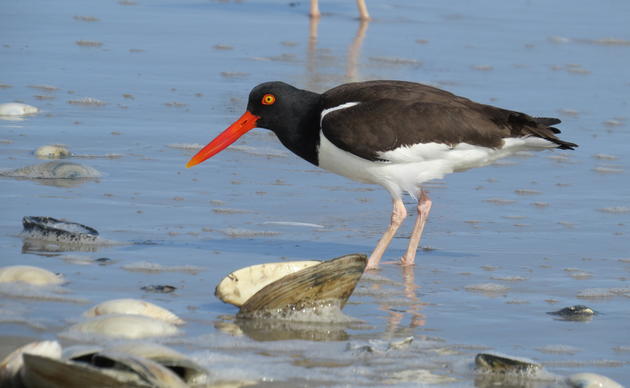Looking out over the saltmarsh in the Mastic Beach Hamlet of the Brookhaven community, you might think the area unused and forgotten. Abandoned homes stand beside dirt roads marred by deep potholes and inundated with seawater that regularly floods the area.
The truth, however, is that the Mastic Beach salt marsh is teeming with life, and on the precipice of incredible change.
In 2012, Hurricane Sandy caused significant damage to both local infrastructure and the saltmarsh. However, the environmental threats to the Mastic Beach community didn’t stop with the hurricane.
Healthy marshes act as a sponge that soak up excess water and release it slowly, helping to mitigate the impact of tides, storm surge, and even excess rainfall or snowmelt. In Mastic Beach, however, the marsh was being squeezed by human development and sea level rise, and as a result, flooding into the community.

Both community residents and town leaders realized that these vulnerabilities had to be addressed, and in 2018 the Town of Brookhaven received the first of two National Coastal Resilience Grants from the National Fish and Wildlife Foundation to restore the saltmarsh in Mastic Beach. “The expansion and protection of healthy marsh at Mastic Beach will provide new habitat to rapidly declining species, all while creating a healthier, higher-functioning coastline that will help protect the community during storm events and as the ocean continues to rise,” said Alan Duckworth, Environmental Analyst with the Town of Brookhaven.
Before restoration can begin, scientists needed to get a thorough picture of the health of the landscape – so the team assessed the distribution of plants, animals, and other physical features such as elevation and tidal flow. Once a baseline has been established, restoration plans to improve the area can be fully developed.
During the 2021 breeding season, Audubon partnered with SUNY ESF’s Saltmarsh Habitat and Avian Research Program to assess the diversity and abundance of bird species currently using the marsh. The results were surprising!

Thirty-four unique species were detected during surveys, including a particularly exciting find: the Saltmarsh Sparrow! Saltmarsh Sparrows are rapidly declining in numbers in New York and along the Atlantic Coast, and have become a priority species for conservation groups in recent years.
To know that Saltmarsh Sparrows are present at this site, and in relatively high numbers, is a happy surprise for everyone working on the project. It indicates that improving this marsh is an important investment for this bird and many other species – from the Clapper Rail to American Oystercatchers – which depend on this saltmarsh to nest and forage during migration.
As coastal development and encroachment on marsh habitat continues, birds face an increasing threat of decline, or even extinction, from habitat loss. The expansion and protection of healthy marsh at Mastic Beach will provide new habitat to rapidly declining species, all while creating a healthier, higher-functioning coastline.
"The restoration of the natural habitats found in Mastic Beach — including the salt marshes—is the beginning of an incredible moment of change for our community. The beauty and power of the water that surround our community is what compels many of us to live here, but also places our properties and lives at great risk. In a low-income town that has been historically underserved, we see an urgent opportunity, not only to restore and protect the land and the eco-system, but also to improve equitable access for our community, so that everyone — salt marsh sparrows, kids, families and adults alike — can benefit from what our beautiful waterfront has to offer," said David Yun, Mastic Beach Conservancy.
Article by Samantha Dietz, Salt Marsh Monitoring Technician
How you can help, right now
Donate to Audubon
Help secure the future for birds at risk from climate change, habitat loss and other threats. Your support will power our science, education, advocacy and on-the-ground conservation efforts.






